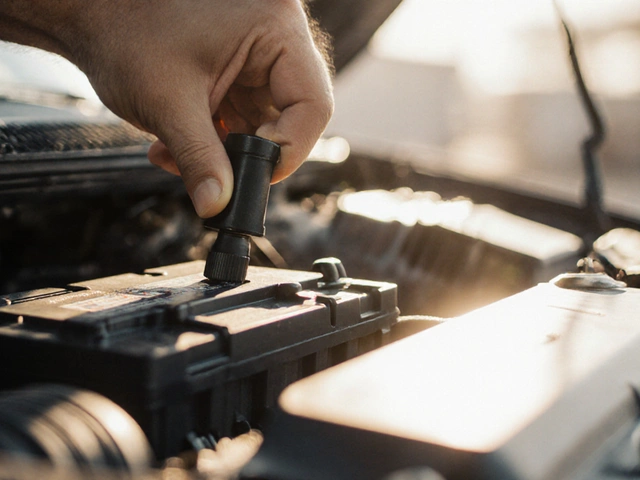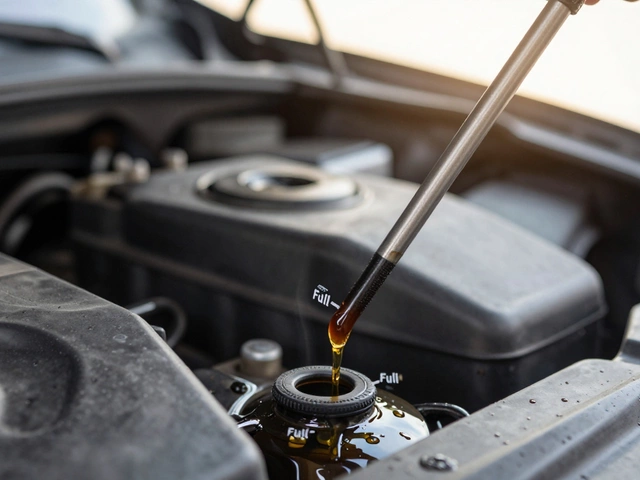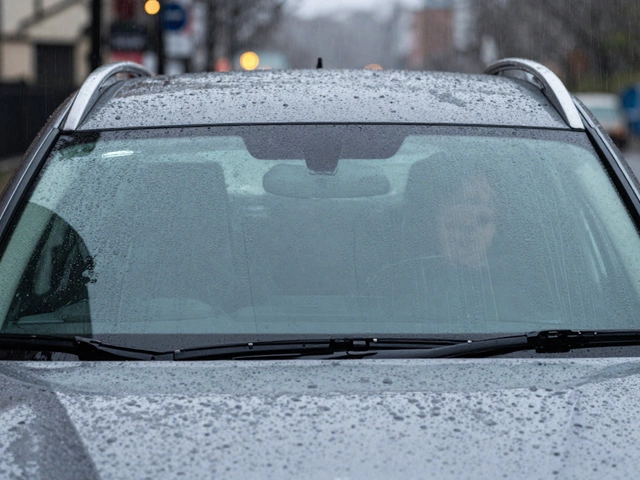
Tire Repair Eligibility Calculator
Tire Assessment Tool
This tool evaluates whether your flat tire can be safely repaired based on damage location, size, age, tread depth, and repair history. Always consult a professional mechanic for final assessment.
Assessment Result
Cost Comparison
| Option | Labour | Parts | Total (incl. VAT) | Lifespan |
|---|---|---|---|---|
| Patch/Plug Repair | £15-£25 | £5-£10 | £20-£35 | Same as original |
| New Tyre | £15-£20 | £80-£130 | £95-£150 | 35-45k km |
When you discover a flat tire is a tire that has lost air pressure due to puncture, leak, or damage, you probably start weighing two options: can I get it fixed, or do I need a brand‑new one? The answer isn’t one‑size‑fits‑all; it depends on the cause, the condition of the tyre, and a handful of safety factors.
What Actually Causes a Flat?
Understanding the root of the problem helps you decide whether a repair will hold up. The most common culprits are:
- Sharp objects - nails, screws, or glass shards that pierce the tread.
- Sidewall damage - curb hits, pothole impacts or severe cuts.
- Valve stem leaks - a faulty valve can slowly bleed air.
- Bead seal failure - the edge that sits against the wheel rim can lose its seal, especially on older tyres.
Each of these has a different repairability outlook.
When a Simple Repair Is Viable
Most punctures that occur in the tread - the part that contacts the road - can be sealed safely. Modern tire repair involves inserting a plug or patch that sits inside the tyre’s inner liner, restoring airtightness.
Key conditions for a reliable repair:
- The damage is smaller than ¼ inch (6 mm) in diameter.
- It lies within the tread area, at least 1½ inches (38 mm) away from the sidewall.
- The tyre’s overall tread depth is still above the legal minimum (often 1.6 mm in the UK).
- The tyre isn’t more than six years old - rubber ages, and older compounds are more prone to failure.
When these boxes are ticked, a reputable tire shop can usually fix the issue in under an hour, saving you the cost of a new set.
When Replacement Is the Safer Choice
Not every flat can be rescued. Consider replacing the tyre if you encounter any of the following:
- Sidewall puncture or tear. The sidewall flexes constantly; a plug there will likely burst under load.
- Severe tread wear. If the remaining tread depth is below 3 mm, a repair won’t address the core safety issue.
- Multiple punctures. Two or more repairs on the same tyre weaken the structure.
- Visible bulges or cracks. These signal internal damage that a simple seal can’t fix.
- Age over six years. Even if the tyre looks fine, the rubber hardens, reducing grip and increasing blow‑out risk.
In these scenarios, buying a new tyre is the only way to keep your car handling predictably.
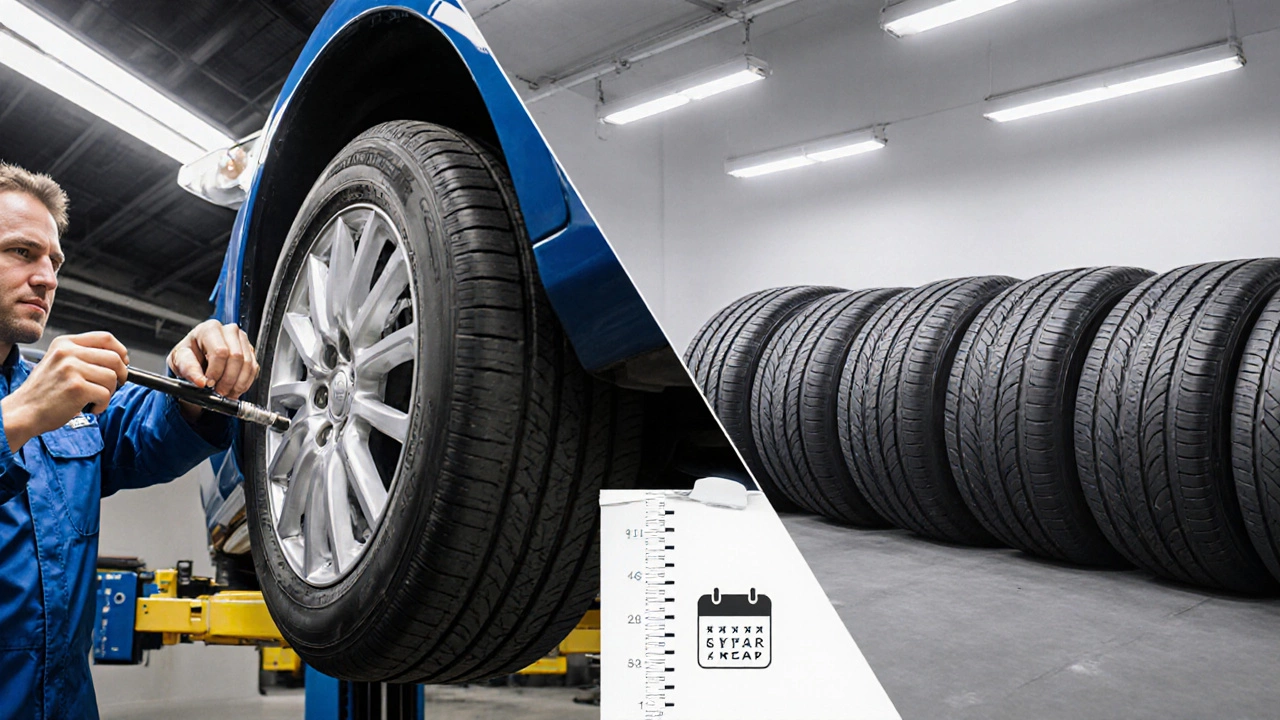
Cost Comparison: Repair vs. Replace
| Option | Average Labour | Part Cost | Total (incl. VAT) | Typical Lifespan |
|---|---|---|---|---|
| Patch/Plug Repair | £15‑£25 | £5‑£10 (sealant & plug) | £20‑£35 | Same as original tyre, if condition permits |
| New Tyre (mid‑range brand) | £15‑£20 (mount & balance) | £80‑£130 | £95‑£150 | 35‑45 000 km or 5‑6 years |
If you’re on a tight budget, a repair can be a lifesaver - but only when the tyre’s health otherwise checks out.
Using a Spare: The Quick Fix Playbook
Most cars come with a temporary spare tire. It’s meant for short distances (usually up to 80 km) and lower speeds (under 50 mph). Follow these steps:
- Find a safe spot away from traffic.
- Loosen the lug nuts before lifting the car with a jack.
- Replace the flat with the spare, tighten nuts by hand.
- Lower the vehicle, then torque the nuts to the manufacturer’s spec (often 80‑110 Nm).
- Drive cautiously to the nearest tyre shop - the spare isn’t designed for long‑term use.
Remember, a spare is a bridge, not a solution. Get the original tyre inspected as soon as possible.
Tech Helpers: TPMS and Sealants
A modern tire pressure monitoring system (TPMS) will flash a warning when pressure drops below a preset level. It’s a great early‑alert tool, but it won’t tell you why the pressure fell.
Some drivers carry a can of puncture sealant. You inject it through the valve stem, it coats the inside of the tyre, and in many cases it can seal small punctures temporarily. It’s handy for emergencies, but it’s not a substitute for a professional repair - the sealant can interfere with balanced mounting and may damage the valve.
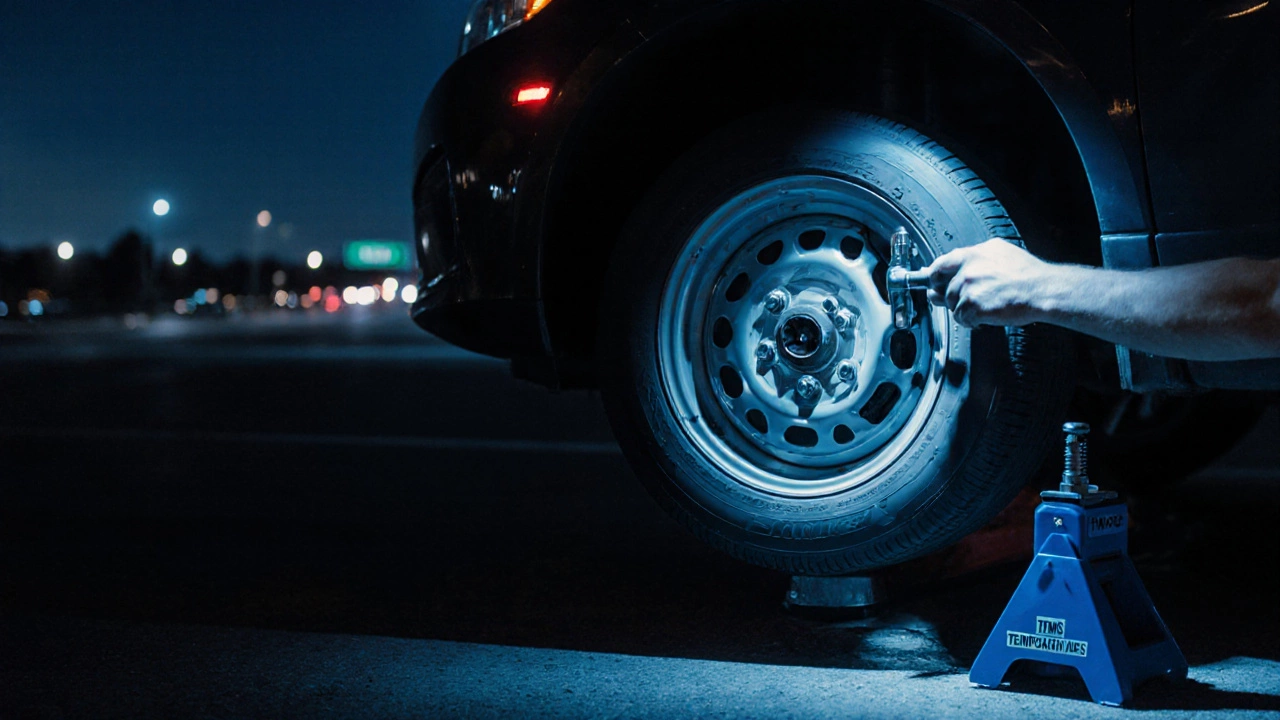
Safety Checklist Before You Hit the Road
Whether you decide to repair or replace, run through this quick audit:
- Check tread depth with a penny or a tread‑depth gauge.
- Inspect the sidewalls for cracks, bulges, or cuts.
- Verify that the valve stem isn’t leaking (apply soapy water to watch for bubbles).
- Make sure the wheel rim is undamaged - a bent rim can cause uneven wear.
- Confirm TPMS warning lights are off after any service.
Skipping any of these steps can leave you vulnerable to a sudden blow‑out, especially at highway speeds.
Bottom Line: When to Call the Pros
If the puncture is in the tread, the tyre isn’t too old, and the damage is tiny, a shop can usually fix it for under £35. Anything beyond that - sidewall damage, extensive wear, multiple holes, or an aged tyre - means you’re looking at a new purchase.
Don’t gamble with a compromised tyre. A solid repair saves cash, but a replacement safeguards you and your passengers. Next time you see that dreaded warning light, weigh the factors, run the safety checklist, and choose the option that keeps you rolling safely.
flat tire decisions are all about balancing cost, safety, and the tyre’s overall health.
Frequently Asked Questions
Can I drive on a flat tyre for a short distance?
No. Even a few metres puts massive stress on the sidewall, which can lead to a sudden rupture. Use a spare or call roadside assistance.
Is a puncture sealant a permanent fix?
Sealant is an emergency measure. It works for small tread punctures, but you still need a professional plug or patch within a few days.
How often should I check my tyre pressure?
At least once a month and before long trips. Cold‑weather drops pressure faster, so check more frequently in winter.
What’s the legal tread depth in the UK?
The minimum is 1.6 mm across the central three‑quarter of the tread. Anything less is illegal and unsafe.
Can a tyre older than six years still be safe?
It can be, but rubber degrades over time. Most manufacturers recommend replacing tyres after six years, regardless of tread wear.


